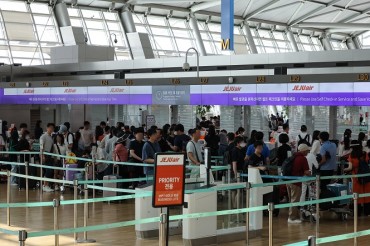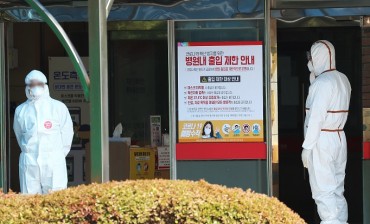
THAAD, a core part of America’s multilayered missile defense program, is designed to intercept incoming ballistic missiles at altitudes of 40 to 150 kilometers during the terminal phase of flight after detecting the missiles with a land-based radar system. (image: Wikimedia)
SEOUL, July 15 (Korea Bizwire) – South Korea will respond firmly to all North Korean threats made against the deployment of the U.S. antimissile system on its soil, the government said Friday, making clear that the move is designed to counter Pyongyang’s evolving nuclear and missile capabilities.
The Ministry of National Defense and the Ministry of Unification issued separate statements warning Seoul will not tolerate continued verbal attacks and other provocative acts by the North.
The warnings come a day after North Korea condemned the decision to deploy the Terminal High Altitude Area Defense (THAAD) system, and call South Korean President Park Geun-hye a “rare traitor” and a “war servant” obsessed with confrontation with the North.
In a statement issued by the Committee for the Peaceful Reunification of the Country of the DPRK, the North’s state committee on inter-Korean affairs, North Korea said, “(Park) must not forget even a moment that the DPRK’s nuclear force for self-defense will be further bolstered up in quality and quantity and the merciless sword of justice will cut off her windpipe no matter how desperately she may try to stifle the compatriots in the North by clinging to the coattails of foreign forces.”
The DPRK stands for the Democratic People’s Republic of Korea, the North’s official name.
Pyongyang also accused Seoul of turning the Korean peninsula into a “theater of a nuclear war” with its decision to allow to station the THAAD system.
The ministries then said Seoul’s decision to deploy THAAD is a self-defensive measure aimed at safeguarding the country’s security.
“If North Korea continues its verbal attacks and other provocative acts, we will take a zero tolerance approach,” Na Seng-yong, the spokesman for the defense ministry, said. He pointed out that the North should not forget that Seoul’s decision on THAAD is directly linked to Pyongyang’s development of weapons of mass destruction.
The unification ministry said that it strongly “condemns (the North) for vulgarly slandering our leader and uttering unjustified accusations with the foul aim of creating division in our society.”
On July 8, Seoul and Washington announced a decision to deploy the THAAD battery in South Korea. A day later, North Korea conducted its latest submarine-launched ballistic missile (SLBM) test, which appeared to end in failure.
The decision made by the two allies triggered strong objections from China that claimed the powerful X-band radar, used by THAAD, could spy on its military activities. But Washington said the system is purely defensive and only aimed at deterring North Korean threats.
Earlier in the week, Seongju, located 296 kilometers south of Seoul, was selected as the site for the country’s first THAAD battery, which can shoot down incoming ballistic missiles from the North during the terminal phase of flight. Local residents of the rural town have strongly objected to THAAD as they believe it will cause health problems.
Related to the THAAD’s deployment plan, Defense Minister Han Min-koo visited Seongju to ease residents’ concerns over safety. In a media event on Thursday, the ministry conducted tests showing that electromagnetic waves generated from the radar of two existing antimissile systems pose no health risks.
THAAD, a core part of America’s multilayered missile defense program, is designed to intercept incoming ballistic missiles at altitudes of 40 to 150 kilometers during the terminal phase of flight after detecting the missiles with a land-based radar system.
A THAAD battery consists of six truck-mounted launchers, 48 interceptors (eight per launcher), a fire control and communications unit, and an AN/TPY-2 radar.
(Yonhap)






